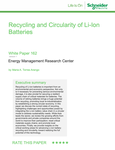Emphasis on sustainability has never been greater in the boardroom, since both customers and governing bodies are concerned about how firms are affecting the environment. Failure to understand this now could cost a company from both a financial and customer retention perspective, as purchasers are increasingly incentivized – both legislatively and reputationally to interact with businesses that have good sustainability credentials. In fact, a recent PWC study found that purchasers are prepared to spend 9.7 percent more for goods manufactured or supplied sustainably, despite continued inflationary pressures.
To add to this, regulatory pressures, especially when it comes to reducing greenhouse gas emissions, are only set to increase. The Climate Change Act commits the UK to reach net zero by 2050. However, earlier this year, a high court ruled the UK government’s climate action plan ‘unlawful’ citing that there is currently not enough evidence of sufficient policies in place to reduce greenhouse gas emissions. A revised plan will be created in the next 12 months which ensures that the UK will achieve its pledge to cut emissions by more than two-thirds by 2030. The majority of UK businesses will likely be expected to play some sort of role in this.
Transitioning away from fossil fuels or decarbonising emissions-intensive industries are often identified are key pathways to net-zero emissions. Another key area that would have a positive impact on organizations’ sustainability is efficient data storage. Today, redundant, obsolete, or trivial (ROT) and dark data continue to plague organizations, with minimal or no effort made to address data storage issues. This presents a big opportunity for businesses operating in today’s increasingly sustainability-conscious landscape.
With the proliferation of digital devices and online applications, organizations are more aware of their data than ever before. However, whilst the topic of data breaches and how to prevent them is often getting airtime, sustainability and the impact that certain data management practices could have on the environment is not.
For example, waste remains a major concern in data storage. The energy consumption of procured storage remains the same regardless of how much of it is used. Thus, using as much of the available capacity as possible, and procuring no more than is needed, must be a priority if businesses want to achieve both efficiency and sustainability.
Data hoarding is a catalyst for poor decision-making. As a business's data pile grows, it becomes harder to keep track of everything and easier for cybercriminals to take advantage. Furthermore, with companies training AI models on their own data, data hoarding can also have an impact on AI output, creating hallucinations.
Data breaches have devastating consequences and, whilst we’re all aware of the financial and reputational damage that can follow, many of us might not be so aware of the environmental cost of data hoarding, with data centers currently pumping out tonnes of emissions to manage global data storage, equivalent of almost two percent of the world’s emissions, which is the same as the airline industry.
The message is clear. Businesses need to assume responsibility when it comes to data storing by turning away from poor data management practices and considering solutions to lessen their carbon footprint.
Making a change
As the pressure to be more sustainable increases, businesses need to get one step ahead. One way to ensure this is to proactively set up emission tracking systems and explore optimizing services that are both eco-friendly and cost-efficient. It is important to get the balance between ensuring that data is securely protected but also that any solutions are being deployed in a way that limits the environmental impact of long-term data storage and management.
Businesses should begin by taking stock of their current data management and storage practices and assessing how they line up with any wider environmental, social, and governance (ESG) goals. Through this, areas for improvement can be identified and business leaders can seek advice from internal or external resources.
To minimize waste in data storage, IT leaders can embrace lean principles with techniques such as data compression, de-duplication, and thin provisioning. It is beneficial for organizations to establish an official data lifecycle to understand the relevance of data, archive infrequently used data, and purge data that is no longer required.
Of course, when it comes to adopting more sustainable data management practices, organizations can consider partnering with cloud service providers to assist in managing their carbon footprint efficiently. Specifically, by dynamically allocating resources across customers’ workloads, cloud data centers can achieve higher resource utilization and energy efficiency – translating into a lower carbon footprint associated with the same workload.
Considering all impacts
Businesses will need to pay closer attention to how their activities affect the environment in the future. Dark data should not be viewed as an inevitable by-product of digitalization; instead, data hoarding and waste must be addressed head-on. Just like we all have to delete old photos and files on our devices, have to do the same, as the impact is multiplied a thousand-fold.
By adopting cloud-based autonomous data management solutions that mix automation, artificial intelligence, and flexible, cloud-based solutions delivery and infrastructure options, organizations can pave a critical path towards a more cost-effective and sustainable business model, and benefit from reputational and genuine global impact benefits




